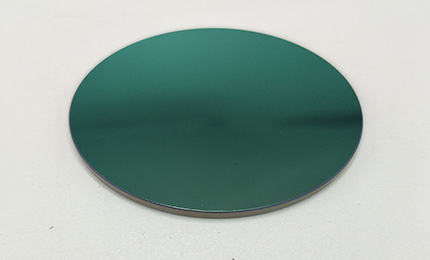In this world filled with endless possibilities, infrared lenses, as a special type of optical component, have opened the door to exploring the unknown. They play a crucial role not only in scientific research and military reconnaissance but have also gradually become an indispensable tool in our daily lives, including in photography and security surveillance. This article will take you deeper into the mysteries of infrared lenses and explore how they are changing our world.

The working principle of infrared lenses is based on the characteristics of infrared light. Infrared light is an electromagnetic wave with a wavelength longer than visible light, which cannot be seen directly by the human eye but can be captured by specific materials and sensors. Infrared lenses utilize this principle, through special optical design and materials, to allow the passage or reflection of infrared light, thereby achieving the purpose of observing or capturing scenes under infrared light.
In the field of military reconnaissance, infrared lenses help soldiers clearly observe targets at night or in low-visibility environments, enhancing night combat capabilities. In scientific research, infrared lenses are used to observe celestial bodies and study global climate change, among other important tasks. Additionally, infrared optical products have a wide range of civilian applications, such as in security monitoring, medical diagnosis, and industrial inspection, where they demonstrate their unique value.

With continuous technological advancements, the technology behind infrared lenses is also evolving. Early infrared lenses had limited performance and application scope due to material and manufacturing constraints. However, with the discovery of new materials and improvements in optical design techniques, the performance of modern infrared lenses has been greatly enhanced.
Modern infrared lenses can provide higher transmittance and lower reflectance, meaning they can capture more infrared light, producing clearer and more detailed images. Furthermore, advanced optical design allows modern infrared lenses to reduce aberrations and improve image quality. These technological advancements have not only expanded the application range of infrared lenses but also provided users with a richer and more precise observation and shooting experience.
With ongoing technological development, the future of infrared lenses is undoubtedly bright. In the future, with the application of cutting-edge technologies such as nanotechnology and quantum technology, the performance of infrared lenses will be further enhanced. We can anticipate that future infrared lenses will be lighter, more efficient, and even capable of high-precision selection and control of specific infrared wavelengths, bringing more possibilities to various fields.
Moreover, with the development of artificial intelligence technology, devices equipped with infrared lenses will be able to achieve more intelligent image recognition and processing capabilities, greatly improving their application efficiency and accuracy in fields such as security monitoring and medical diagnosis.
In summary, as a bridge between the real world and the unknown, infrared lenses are continuously expanding human horizons and opening new chapters in exploration with their unique charm and powerful functions. With continuous technological progress, infrared lenses will play an even more important role in the future, contributing greater strength to the development of human society.
 Call us on:
Call us on:  Email Us:
Email Us:  No.9 Zhongxing East Road, Lishui Economic Development Zone, Nanjing, Jiangsu, China
No.9 Zhongxing East Road, Lishui Economic Development Zone, Nanjing, Jiangsu, China